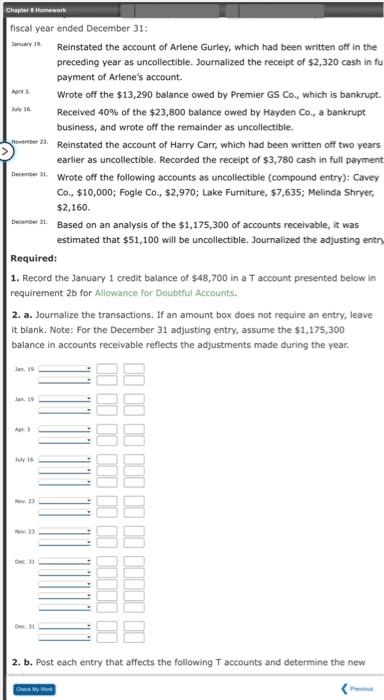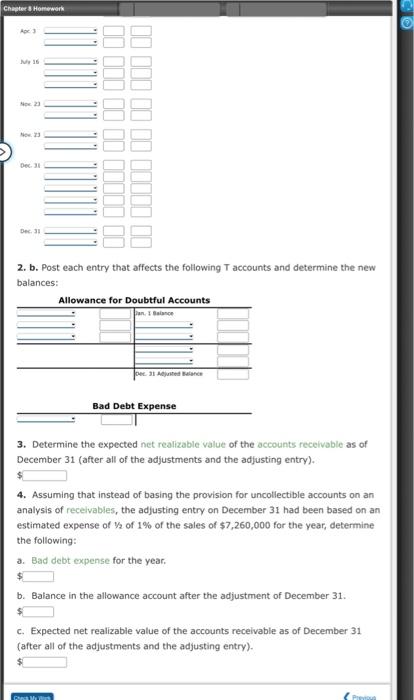fiscal year ended December 31 : amuary is Reinstated the account of Arlene Gurley, which had been written off in the preceding year as uncollectible. Journalized the receipt of $2,320 cash in fu payment of Arlene's account. Avi 3. Wrote off the $13,290 balance owed by Premier GS Co., which is bankrupt. Ww 36. Received 40% of the $23,800 balance owed by Hayden Co., a bankrupt business, and wrote off the remainder as uncollectible. Reinstated the account of Harry Carr, which had been written off two years earlier as uncollectible. Recorded the receipt of $3,780 cash in full payment Dewimerit Wrote off the following accounts as uncollectible (compound entry): Cavey Co., $10,000; Fogle Co., \$2,970; Lake Furniture, 57,635; Melinda Shryer, $2,160. Decenter is. Based on an analysis of the $1,175,300 of accounts receivable, it was estimated that $51,100 will be uncollectible. Journalized the adjusting entry Required: 1. Record the January 1 credit balance of $48,700 in a T account presented below in requirement 2b for Allowance for Doubtful Accounts. 2. a. Journalize the transactions. If an amount box does not require an entry, leave it blank. Note: For the December 31 adjusting entry, assume the $1,175,300 balance in accounts receivable reflects the adjustments made during the year. 2. b. Post each entry that affects the following T accounts and determine the new 2. b. Post each entry that affects the following T accounts and determine the new balances: 3. Determine the expected net realizable value of the accounts receivable as of December 31 (after all of the adjustments and the adjusting entry). 4. Assuming that instead of basing the provision for uncollectible accounts on an analysis of recelvables, the adjusting entry on December 31 had been based on an estimated expense of 1/2 of 1% of the sales of $7,260,000 for the year, determine the following: a. Bad debt expense for the year. b. Balance in the allowance account after the adjustment of December 31 . c. Expected net realizable value of the accounts receivable as of December 31 (after all of the adjustments and the adjusting entry)








